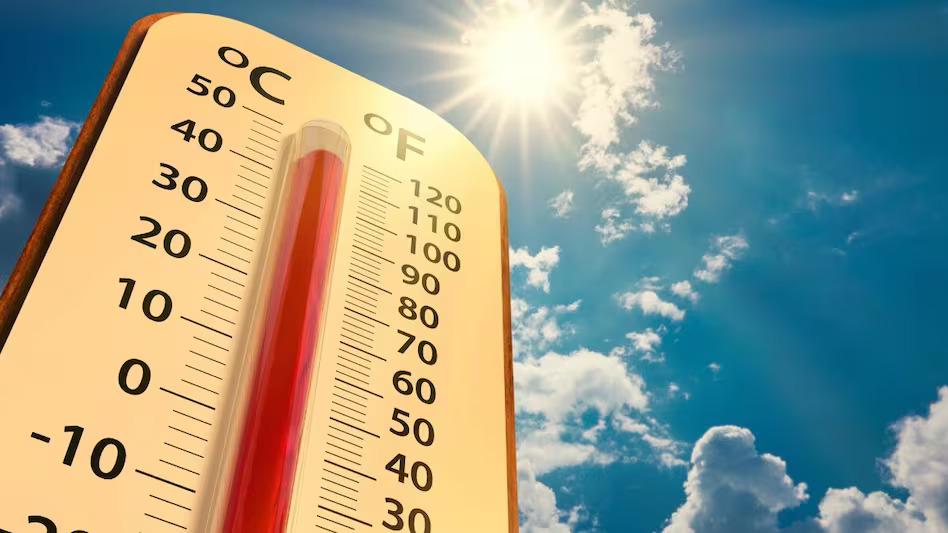Gujarat is bracing for an extended and intense heatwave, with the India Meteorological Department (IMD) forecasting maximum temperatures between 40°C and 44°C across most parts of the state, particularly in the Saurashtra-Kutch region, until April 30.
As per the IMD’s latest forecast, maximum temperatures will remain largely unchanged for the next three days, after which they are expected to rise by another 2 to 3 degrees in several regions.
Bhuj, on March 24, recorded the highest temperature in the state at 42.7 degrees Celsius, which was a staggering 4 degrees above normal for the season. Rajkot followed closely with 42.2 degrees, 2 degrees above normal, and Ahmedabad touched 42.1 degrees, also 2 degrees above the average.
Other cities too witnessed unusually high heat: Gandhinagar at 41.6 degrees, Amreli at 41.9, Deesa at 40.8, and Vadodara at 40.4 degrees. In contrast, coastal areas remained comparatively cooler. Veraval recorded the lowest maximum temperature at 31.4 degrees, one degree below normal, while Surat registered 35.6, and Porbandar recorded 35.0 degrees.
These areas have largely escaped the brunt of the inland heatwave thanks to the sea breeze. Minimum temperatures across the state ranged between 27.0 degrees and 20.2 degrees, with Bhavnagar recording the highest and Porbandar the lowest.
The humidity levels varied significantly, with morning readings at 48 per cent in Ahmedabad, 75 percent in Bhuj, and 69 percent in Amreli. However, the relative humidity dropped sharply by the afternoon, contributing to the dry and harsh heat. To combat the intense summer heat and protect citizens from heat-related health risks, the Gujarat government has implemented a range of preventive and preparedness measures. Key among these is the activation of Heat Action Plans across various municipal corporations and districts.
These plans, developed in coordination with the (IMD) and health departments, include early warning systems, public awareness drives, and emergency response strategies to minimise the impact of extreme temperatures.
Health advisories have been issued through media, radio, and digital platforms, urging people to stay indoors during peak heat hours, stay hydrated, and look out for symptoms of heat exhaustion. The government has instructed urban local bodies to set up cooling shelters such as shaded rest areas, water kiosks, and first-aid points at public places like bus depots, markets, and construction sites.
Hospitals and primary health centres have been put on high alert, with designated wards and medical teams prepared to handle heatstroke and dehydration cases. School timings in many parts of the state have been adjusted, and outdoor school activities have been curtailed to safeguard children from direct exposure to the heat.
In addition, reports indicate that the Gujarat government is coordinating with local civic bodies to ensure uninterrupted water supply, particularly in heat-prone and drought-affected areas. Water tanker services have been intensified in rural regions where natural sources are depleting due to soaring temperatures. Meanwhile, power utilities have been directed to manage electrical load efficiently to avoid outages, especially during peak hours, ensuring the continuous operation of fans, coolers, and air-conditioning systems.



